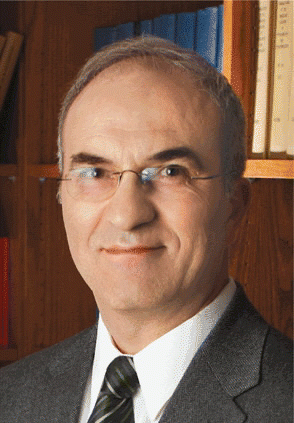When there was a cold or ear infection among the children, a local sample was obtained and analyzed for specific bacteria and viruses, he explained, as he reported on the first three years and part of the fourth year of the study, which was partially supported by a grant from the National Institutes of Health.
Explore This Issue
December 2008One of the goals of this study was to assess the efficacy of potential strategies for otitis media prevention, he said.
We collected data from 102 families, including 213 subjects, he said. The average age of the subjects was 3.7 years; 110 were boys and 103 were girls. About 82.6 percent of the children were Caucasian; 11.3 percent were black. We detected viruses in 176 of the subjects, or 81 percent of those from whom samples were taken. We found that 114 of these subjects had one virus; 51 had two viruses; six had three viruses; one had four viruses; and four had five viruses. We found that 103 cases of otitis media were associated with virus.
Most of the children had infections with rhinoviruses. There were 140 children analyzed with rhinovirus upper respiratory infections and 62 of these children had otitis media (five of which were acute otitis media infections), or an association rate of 44%.
 It is known that at least 50 percent of otitis media is preceded by viral infections. Somewhere between 20 percent and 40 percent of infections lead to otitis media.
It is known that at least 50 percent of otitis media is preceded by viral infections. Somewhere between 20 percent and 40 percent of infections lead to otitis media.-Cuneyt Alper, MD
Dr. Alper said respiratory syncytial virus was identified in 27 subjects, 15 of whom had otitis media (5 acute cases), for an association rate of 56%. Eleven children were found to have influenza A infection, and eight of them had otitis media (3 acute cases), for an association rate of 73%. Five children had influenza B infection, with one of those children also having otitis media (20%). Twelve children were diagnosed with adenovirus infection, and six of them had otitis media (50%). Eighteen children were infected with coronaviruses, and seven of them had otitis media; and 11 children had parainfluenza viruses and four of them had otitis media.
Implications of the Study
Dr. Alper said the small numbers of nonrhinovirus infections made it impossible to determine if there was significance between a specific virus and the risk of developing otitis media.
Minor variations in antigens associated with different rhinovirus organisms makes it difficult to create an immunization vaccine to be effective against all strains, said Barry Hirsch, MD, Chairman of the Hearing Committee of the American Academy of Otolaryngology and Professor of Otolaryngology at the University of Pittsburgh Medical Center. These variations make each version of the virus different enough to make it unique so our immune system could not be induced to recognize it.
Leave a Reply